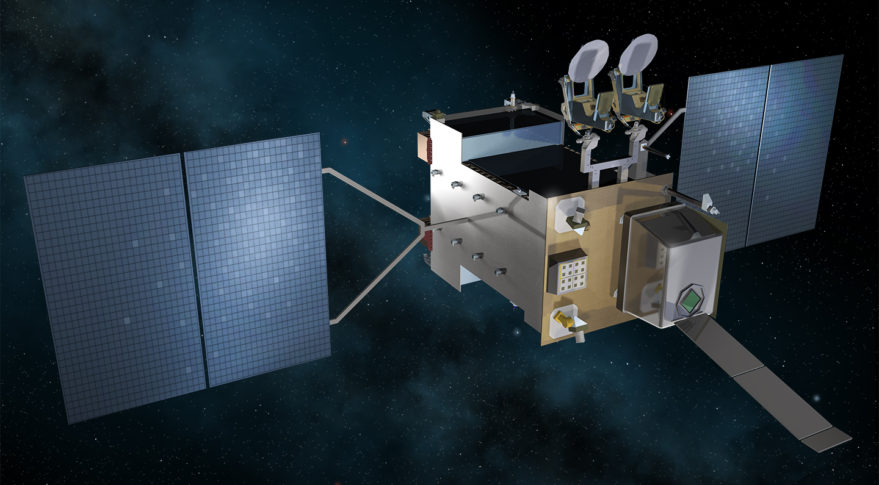
Two payloads qualified for U.S. Space Force early warning satellites
by Sandra ErwinRaytheon and a Northrop Grumman/Ball Aerospace team designed competing sensor payloads for the Next-Gen OPIR geosynchronous satellites.
WASHINGTON — Two sensor payloads for the U.S. Space Force’s new missile warning satellites have passed a key design review. One of them will be selected for the first Next-Generation Overhead Infrared satellite scheduled to launch in 2025.
Raytheon and a Northrop Grumman/Ball Aerospace team designed competing sensor payloads for the Next-Gen OPIR geosynchronous satellites that Lockheed Martin is developing for the Space Force’s Space and Missile Systems Center. Both payloads completed preliminary design reviews last week, SMC said on May 22.
Next-Gen OPIR is a planned constellation of early warning satellites that detect intercontinental and tactical ballistic missile launches.
Lockheed Martin in August 2018 received a $2.9 billion contract to build three Next-Gen OPIR GEO satellites. The company in October 2018 selected Raytheon and the Northrop Grumman/Ball Aerospace team as subcontractors for the mission payloads.
The Space and Missile Systems Center and Lockheed Martin will decide which payload will go on the first and second satellites. Lockheed Martin will select one of the two to fly on the third satellite.
“Both teams have made incredible progress in developing potential next generation sensors for this critical national defense system,” said Joe Rickers, Lockheed Martin’s Next-Gen OPIR program director.
A “critical design review” is planned for late 2021, said Col. Dan Walter, Next-Gen OPIR space segment program manager. “The next steps are the build and test of engineering design units, and procurement of critical flight hardware for the first space vehicle delivery in 2025.”
The engineering design units are used to demonstrate capabilities and integration with the satellite before the space flight hardware is delivered.
Wallis Laughrey, vice president of Raytheon Intelligence & Space, told SpaceNews that the company is developing the Next-Gen OPIR payload using existing focal planes and electronics from other programs. “We have 18 sensor programs in production, some of which are the same magnitude as Next-Gen OPIR,” he said.
Raytheon and the Northrop Grumman/Ball Aerospace team also are designing sensor payloads for two Next-Gen OPIR polar satellites being developed by Northrop Grumman.